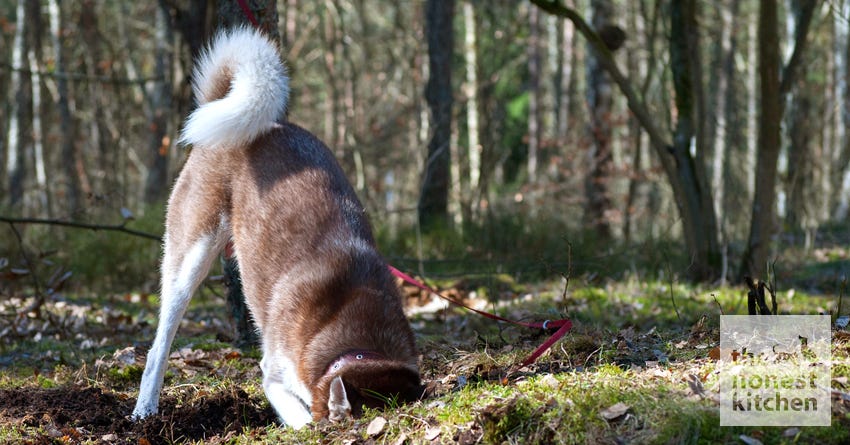There are few animals that come in as many sizes, colors, and varieties as dogs. Some weigh hundreds of pounds and others that weigh less than five. Some are nearly three feet tall at the shoulder, while others are only 6 inches tall. They are Brown, black, white, gray, and any color in between. Then there are the tails; long tails, short tails, skinny tails, fluffy tails and curly tails. What is the deal with those curly tails?
Types of Curly Dog Tails
Even among curly tails there is some variety. Pugs and some Bulldogs have corkscrew shaped tails. This tail shape can be caused by vertebrae that have either fused or are wedge-shaped. The medical term for this condition is hemivertebrae. It's common in these breeds and not a concern as long as it effects the only the tail.
The other common curled tail type is not as pronounced as the corkscrew tail but may be more common: the sickle-shaped tail. Many breeds of dogs have this type tail, including the Akita, Alaskan Malamute, American Eskimo Dog, Chow-Chow, Siberian Husky, and Spitz, to name a few. Corkscrew tails, due to the vertebrae deformity which causes them, stay in that position. But sickle tails can be held many different ways and can reflect both your dog's emotional and physical state.
What Sickle-Shaped Tails Can Say
When your dog is in his normal, happy state, his tail will be held up, softly curled over his back. He may wag it gently, still curled, if he's slightly happy. If his tail is tightly curled over his back, and/or bristly, he's on alert. If his hackles are up as well, he's in a defensive posture. If he is overjoyed, he may wag his tail so fast and hard that he no longer keeps it curled, but allows it to straighten out as he wags it. If he holds his tail fairly straight and low, it's a good indication that he's not feeling well or is frightened.
Many sickle-tailed breeds of dogs originated in cold climates. Pay attention to your dog as he settles down to sleep on a cold night. He'll curl up in a ball with his front paws folded in next to his body and his tail clamped tightly to his body: The shape of his tail allows him to have the end of his tail over his nose to keep it warm. Believe it or not, your dog can control if his tail is straight or curled. Sometimes when he stretches, he'll straighten his tail out, and then pull it back curled up. This happens so quickly so it looks like one of those blowout party favors, where you blow and the curled paper at the end straightens out while you blow, then curls back up when you stop. Big, small, short or tall—and regardless of tail type—there's one thing for sure: the friendship, loyalty and love your dog gives you can't be beat.


